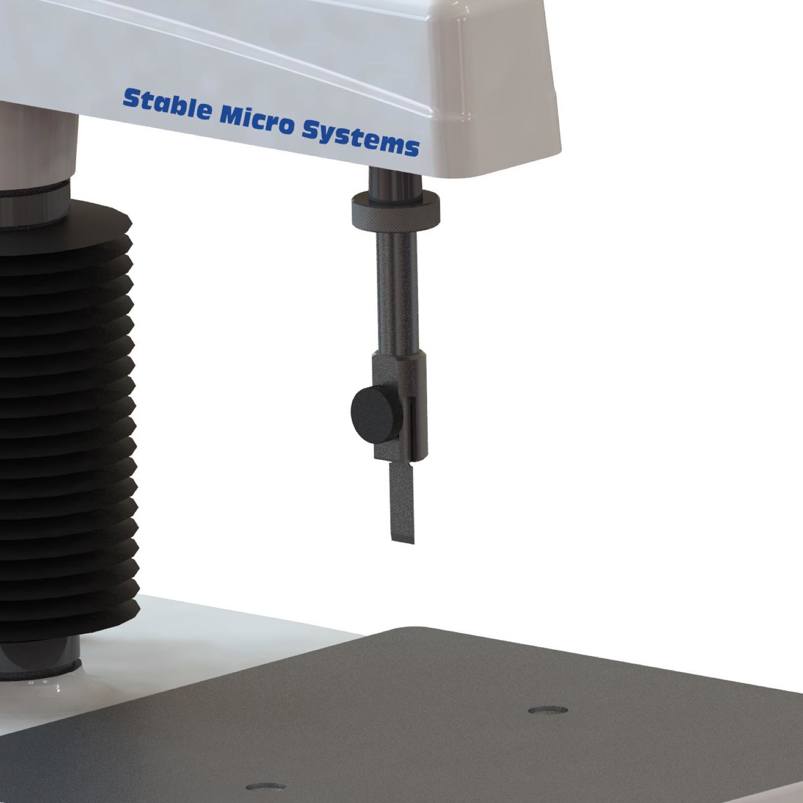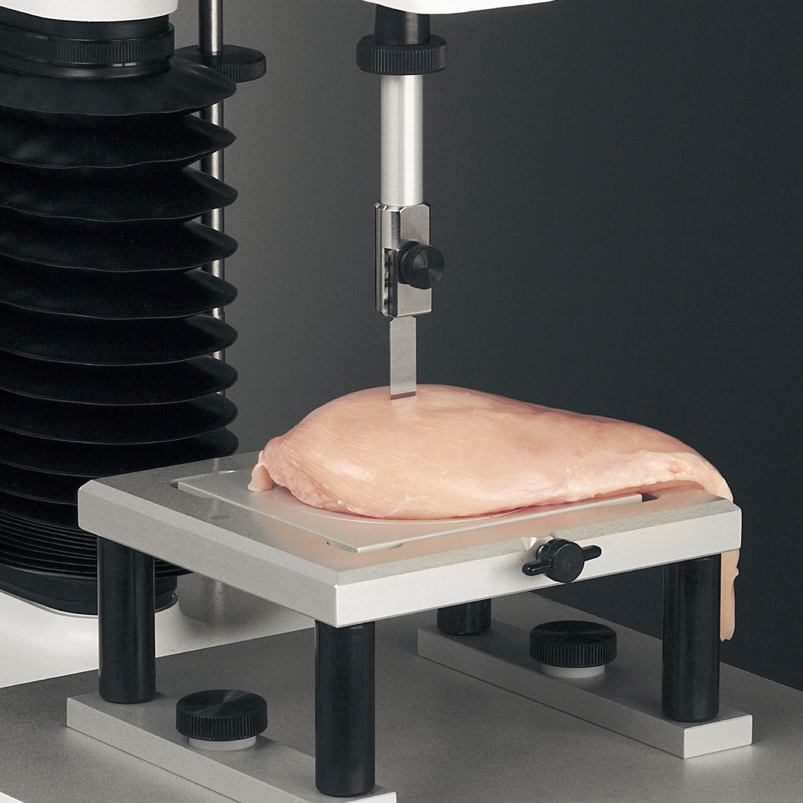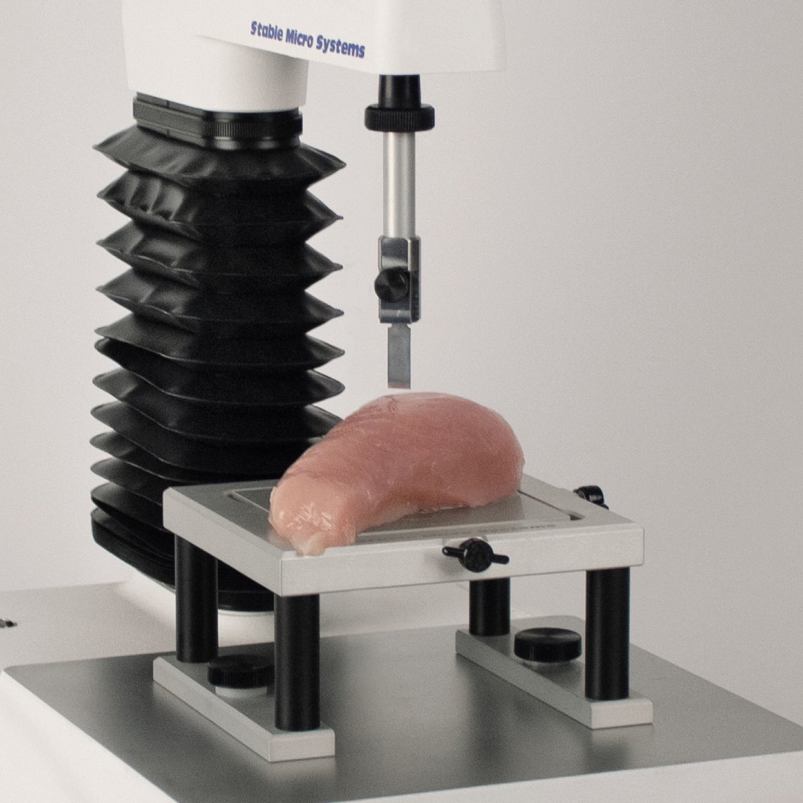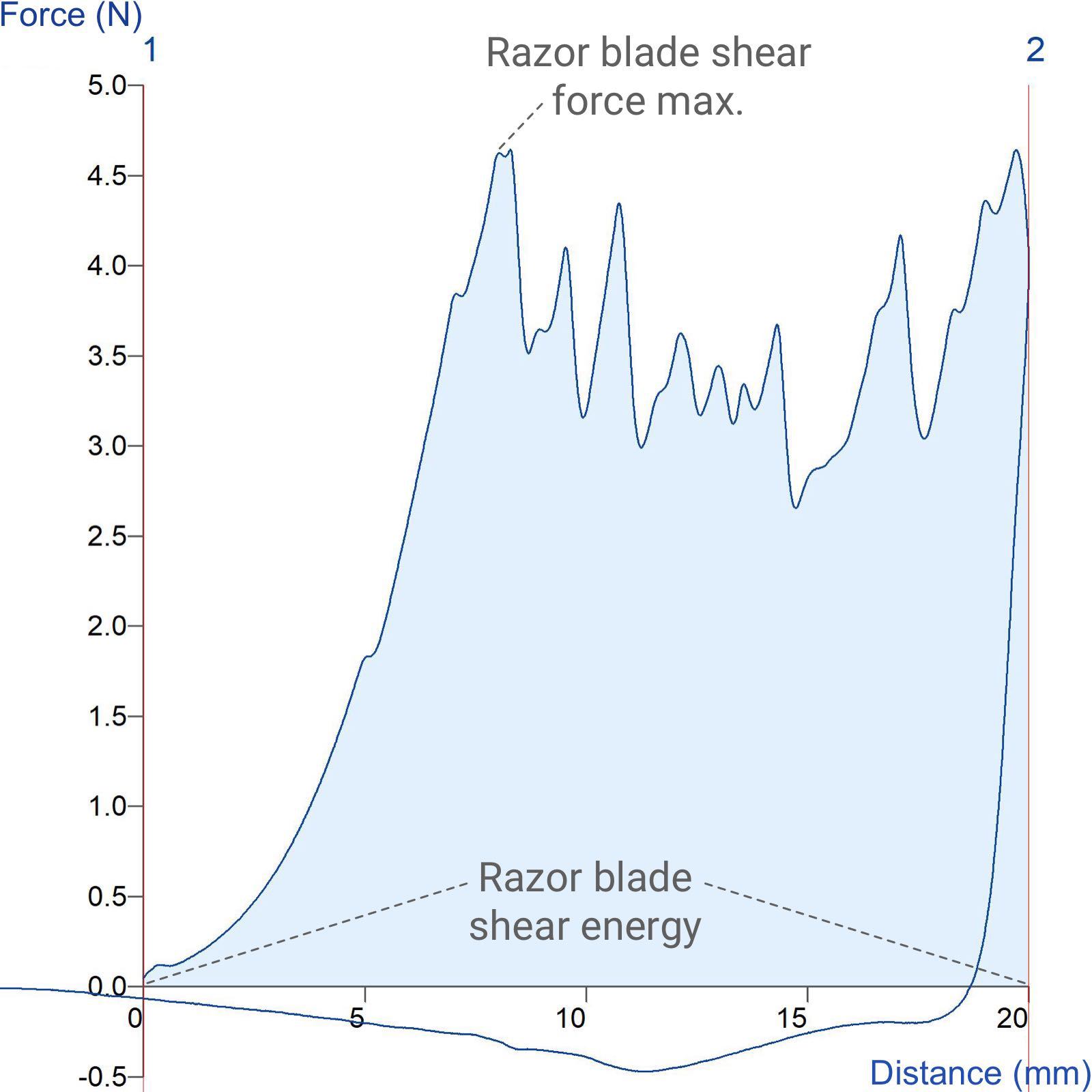Product overview
The meat and poultry industries face increasing challenges with tough meat due to higher demand for processed products and increased production. This has led to muscling myopathies like Woody Breast (WB) in broiler chickens, characterized by abnormal hardness and poor meat quality. WB has caused significant economic losses in the poultry industry due to reduced consumer acceptance.
To address these issues, processors are exploring ways to increase boneless meat production without compromising quality. Tenderness, being the most critical sensory characteristic, has become a focus for quality assessment. While sensory evaluation is ideal, its time-consuming and costly nature has led to the development of instrumental methods for measuring meat tenderness.
Several instrumental procedures have been introduced since the late 1920s, including:
- Allo-Kramer shear compression system
- Warner-Bratzler Shear Blade
- Meullenet-Owens Razor Shear (MORS)
The MORS method, developed at the University of Arkansas, has gained popularity due to its high reliability and simplicity compared to other industry standards. The method uses a razor blade of defined dimensions attached to a Texture Analyser which then performs a cutting/shearing test. Tests are performed on intact fillets using the MORS blade penetrating to a depth of 20mm providing a far less destructive method as only a small incision is made in the sample. When performing cutting/shearing tests the consistent sharpness of the blade is always a consideration or cause for concern. The benefit of performing tests using a readily available craft knife blade is that the blade can be removed and replaced after each test or an agreed number of tests, assuring edge sharpness and therefore increasing the repeatability of the results.
The MORS is not only as reliable as the industry standards and claims to exhibit a higher correlation to sensory attributes than the Allo-Kramer Shear method, but also more rapid because of the elimination of the sample cutting steps. It has been reported that both the WB and AK shear are significantly affected by sample dimensions. Furthermore, AK shear is so dependent on sample dimensions that it is a standard practise to divide the AK maximum shear force by the sample weight. The razor blade test has proven to also be less time consuming, as 60 measurements can be performed in 1 hour compared with 30 measurements in the same amount of time for the Allo-Kramer shear test. Measured forces are also substantially lower than those produced with a Kramer Shear test, thereby allowing testing on a single column Texture Analyser.
As tests using the MORS blade are conducted on whole intact fillets this minimises the experimental errors attributable to sample preparations, shortens sample preparation time and leads to a simpler testing solution. The application of the MORS method thereby provides advantages over existing industry standards for poultry breast meat tenderness and is of benefit to the poultry industry as it significantly saves labour, time and expertise to implement for routine quality control.
Razor blade shear energy (N*mm) is calculated as the area under the force deformation curve from the beginning to the end of the test and maximum shear force (N) is also recorded during the test. Both parameters used as instrumental assessments of meat tenderness. Results show that the optimal number of replications of the MORS for a reliable estimate of tenderness to be four shears or greater per fillet in predetermined shearing locations.
It is recommended that the sharp blade is replaced every 100 measurements for optimum shearing performance and hence result repeatability.
How does the Meullenet-Owens Razor Shear Blade work?
Ideal sample form
Self-supporting samples with little/no sample preparation.
Benefits and limitations
- Blades are replaceable for upkeep of sharpness
Optional extras
Additional blades (in sets of 10) can be supplied – A/MBL
Technical information
Installation
Full installation instructions are provided within the Education Zone of the latest Exponent/Connect software version and on the technical information sheet accompanying this product.
Chemical compatibility
Stable Micro Systems probes and attachments are commonly made from four materials: anodised aluminium (AA6082 T6), stainless steel (316 T), Delrin (acetyl copolymer) and Perspex (polycarbonate).
In general use, probes and attachments made from these materials will be suitable for testing food products and inert non-food materials.
The four materials listed above are not universally resistant to all types of chemicals and as such the compatibility of the probe/attachment material with the product (to be tested) must be established to prevent damage to the probes and attachments. If the compatibility of the product with the probe is unknown to the customer then the chemical information about the product (Material Safety Data Sheet or Product Data Sheet) should be submitted to Stable Micro Systems. Stable Micro Systems will then assess the suitability of the probe/attachment material for use with the product and advise accordingly. If this advice is not sought then Stable Micro Systems will not accept liability for probes/attachments damaged by chemical attack from the product being tested.
Cleaning and maintenance
All probes and attachments may be cleaned in warm (or hand hot) water using a mild detergent. A soft brush may be used but abrasive cleaning aids should be avoided. Stable Micro Systems products should not be microwaved or cleaned in a dishwasher.
Screw threads should be lightly lubricated after drying using a light lubricant, e.g. petroleum jelly, mineral oil. This will aid the fitting and unscrewing of the item. Each component of a probe or attachment should be wrapped separately when stored, to avoid scratching or chipping. This will safeguard against any unnecessary damage to the accessory.




